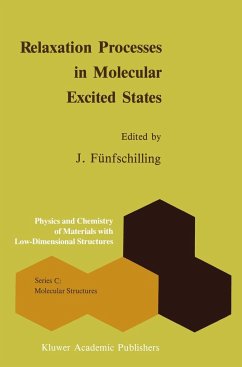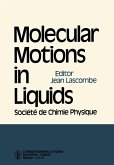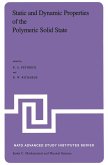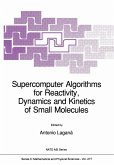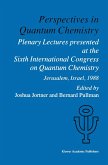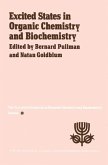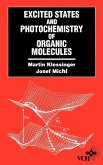Relaxation phenomena of excited molecular states are abundant in all nature. They mediate such key processes as photochemical reactions or even the pathways of ordinary chemical reactions. However, for a long time the main research in electronic relaxation processes was concerned with anorganic solids, in part because of their great technological importance (photography, semiconductors ... ) in part also because these compounds were the "workhorses" of the solid state physicists. In the last 30 years, there was a steadily increasing interest in organic molecular systems, first in molecular crystals and later in all forms of molecular solids (glasses, polymers, membranes, ... ). The present volume combines papers on quite different types of relaxation phenomena: the type of solid studied, the electronic states involved, the physical processes responsible for the relaxations are all different. Nevertheless, after reading this book, a more clear and complete picture of the phenomenon "relaxa tion" emerges that proves that this volume is more than just a collection of individual articles. The volume starts with the paper "Spin-lattice and spin-spin relaxation in photo-excited triplet states in molecular crystals" by Jan Schmidt. Even in these seemingly simple systems of isolated guest molecules in a single crystal host, the relaxation phenomena are quite involved and a very thorough investigation is necessary to find the key relaxation processes. The end of the article provides a bridge to the following paper: it treats interactions of two molecules (dimers), where resonant interactions become important and lead to new, characteristic relaxation processes.
`This volume is a compilation of four excellent papers by the top people in the field covering different types of relaxation phenomena (types of solids studies, electronic states and physical processes involved) with many examples.
It is thus proved that this volume is not just a collection of papers but something more as it gives a clear and almost complete picture of the relaxation phenomena which is very much needed for researchers involved in the study of the physics and chemistry of materials. The author has to be congratulated for this new and excellent compilation.'
Bulletin of Electrochemistry, 6:8, 1990
It is thus proved that this volume is not just a collection of papers but something more as it gives a clear and almost complete picture of the relaxation phenomena which is very much needed for researchers involved in the study of the physics and chemistry of materials. The author has to be congratulated for this new and excellent compilation.'
Bulletin of Electrochemistry, 6:8, 1990
`This volume is a compilation of four excellent papers by the top people in the field covering different types of relaxation phenomena (types of solids studies, electronic states and physical processes involved) with many examples.
It is thus proved that this volume is not just a collection of papers but something more as it gives a clear and almost complete picture of the relaxation phenomena which is very much needed for researchers involved in the study of the physics and chemistry of materials. The author has to be congratulated for this new and excellent compilation.'
Bulletin of Electrochemistry, 6:8, 1990
It is thus proved that this volume is not just a collection of papers but something more as it gives a clear and almost complete picture of the relaxation phenomena which is very much needed for researchers involved in the study of the physics and chemistry of materials. The author has to be congratulated for this new and excellent compilation.'
Bulletin of Electrochemistry, 6:8, 1990

